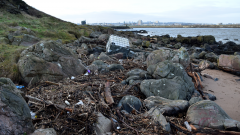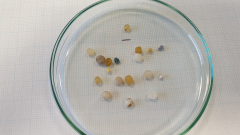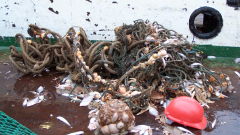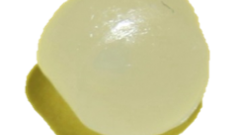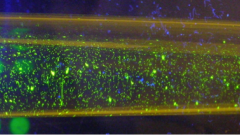Marine litter
Marine litter is the collective term for ‘any persistent manufactured or processed solid material discarded, disposed of or abandoned in the marine and coastal environments, including material lost at sea in bad weather’.
Marine litter is found everywhere in the world’s oceans, not only close to densely populated areas but also in remote areas far from obvious sources. The main land based sources are tourism, fly tipping, sewage, and waste disposal sites and the litter can be transported to the sea by rivers, drainage systems, sewage run-off or the wind. The main sea based sources are shipping, fishing and offshore oil and gas installations.
Significant quantities of marine litter appear in the seas and on beaches. Litter is unsightly and can cause harm to marine wildlife through entanglement and ingestion, smothering of the seabed and as a platform for invasive species. Plastics are the main type of litter found both on beaches and offshore, including increasing quantities of microplastic resulting from degradation of larger plastic products in the sea or the direct release of microplastics.
Marine litter was assessed by looking at microplastics in surface water, beach litter using the pilot Scottish Beach Litter Performance Indicators and sea-floor litter using data gathered by the International Bottom Trawl Surveys.


